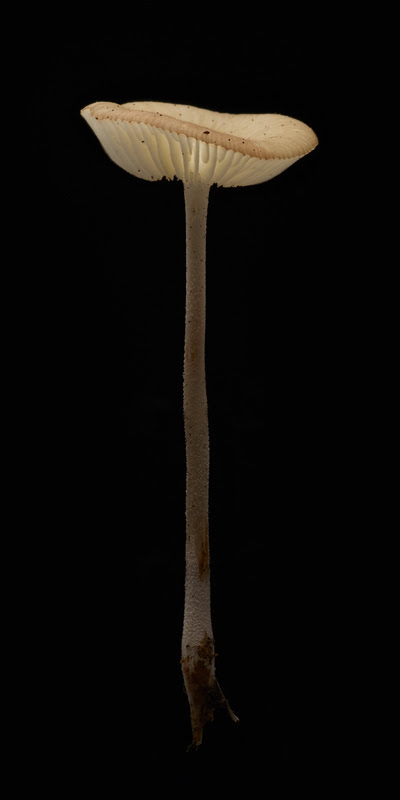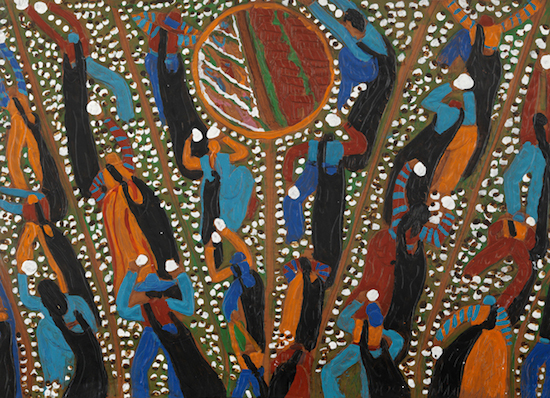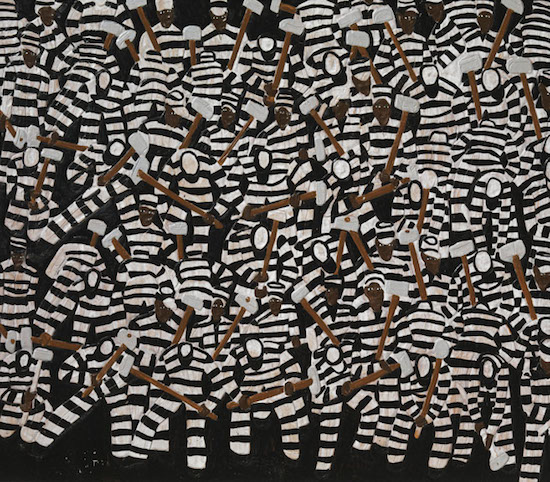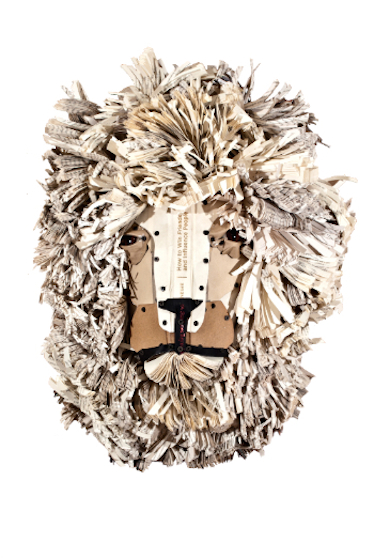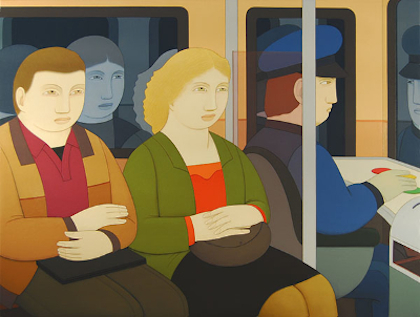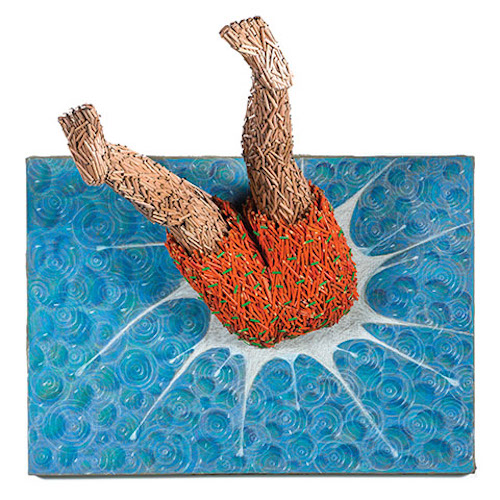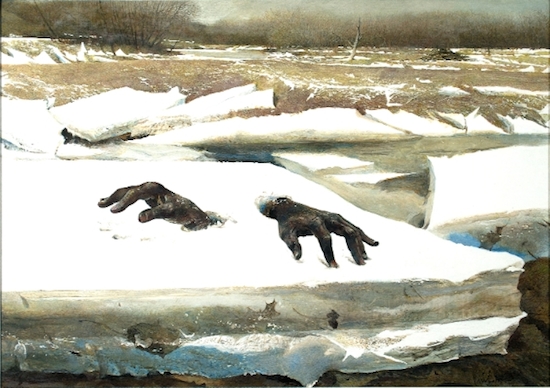
Rocky, dark and deep
“Woods in Maine” (watercolor on paper), by John Singer Sargent. (1856-1925), in the “Winter Show,’’ at Adelson Galleries, Boston, through Feb. 2
Private moments, public spaces
“Two Woman and Boy’’ (pinned Mylar collage), by Eric Fischl, in his current show “Eric Fischl: Recent Work,’’ at the Adelson Galleries, Boston.
Adelson says: “Our newest exhibition features a collection of Fischl’s most recent prints, paintings and sculptures that explore private moments in public spaces. Using Mylar collage, glass sculpture and poured resin, our collection of pieces invite the viewer to a dialog about transparency and the human image spanning among two and three dimensions. Through a variety of increasingly modern techniques, his recent works are a fine-tuned, energetic and thought provoking evolution to his early works.’’
Flat-face fantasies
From Andrew Stevovich's show "Contemplating Figures,'' at Adelson Galleries, Boston, opening May 4.
'Mardi Gras Indians' in Boston
"White and Pink Feathers'' *(photo), by Max Stern , in the joint show with Robert Freeman called "Mardi Gras Indians,'' at Adelson Galleries, Boston, March 2-April 29.
The gallery's owner, Adam Adelson says:
"The photographs are more than documentation. Each image carefully captures the emotional expression of these subjects. Stern expertly focuses his lens towards plumes of feathers, beads, and a cacophony of assembled decorations that make up the elaborate garb worn by the Mardi Gras Indians of New Orleans. The figures are larger-than-life, and Stern makes it clear that the people he snapshots are just as important as the suits they inhabit. Freeman’s paintings illustrate movement and energy while Stern’s photography reveals the individuals that are responsible for this ritual and the intricacy of craftsmanship in their suits. ''
"Golden Pendant'' (painting), by Robert Freeman.
Mr. Adelson writes:
"Upon walking into Robert Freeman’s studio for the first time since our last exhibition, I was stunned to see the evolution of his work, which was inspired by his recent trip to visit his friend, Max Stern, in New Orleans. The two encountered a parade of locals referred to as Mardi Gras Indians, familiar to Max, but completely foreign to Robert. The origin of these people started after the Civil War, when African American ex-slaves were taken in by Indigenous Americans.The group melded African and Native American rituals, and have evolved into a community that is unique to New Orleans. Individuals in these local tribes will spend an entire year creating their elaborate outfits, which are rarely worn more than once. These locals emitted a passion that Robert and Max could not help but record.
"The canvases are bursting with color and the figures seem to dance off the edges of the canvas. Freeman has taken a bold new approach to his painting by adding ostrich feathers as well as gold leaf to represent the elaborate 'suits' worn by the Mardi Gras Indians. Looking at Freeman’s new paintings transports me to a place I have never been, yet as with his other series, these anonymous figures seem to invite me to participate. The loud and energetic paintings appear fictional until they are put into context with the photography of Max Stern.''
'Effort and reflection'
"La Bruma" (mist), by Raul Diaz, in his show through Nov. 12 at the Adelson Galleries, Boston. Adelson says: "The ... boats; empty and idle vehicles without a conductor, float on still water. This reoccurring symbol in Diaz’s oeuvre may represent life’s voyage, and the balance between effort and reflection required to move forward. Moments of serenity often follow periods of intensity, exemplified poetically in the artist’s course of creation.''
Sunny-side up
"Jessie's Diner'' (oil on linen), by Andrew Stevovich, at Adelson Galleries, Boston.
Bold new territory for 'the pulps'
"19 Kimball'' (mixed media on wood panel) by Sam Earle, in his show "Pulp,'' at Adelson Galleries, Boston, June 2-July 30.
The gallery notes say, among other things:
"The word 'pulp' is commonly used to describe a reduction of fruit or wood into a puree; however, it was commonly used at the beginning of the 20th Century as a word to describe popular or sensational writing. Between 1896 and the 1950s, 'the pulps' or 'pulp fiction' magazines, which were printed on cheap wood pulp paper, became all the rage. The genre ranged from fantasy to humor to horror and occult, and the garish subject matter of the literature reflected the low-quality paper on which it was printed.
''In keeping with the tradition of pulp fiction, Sam Earle’s newest series is edgy and fearless. In his distinctive style – layering imagery over images over image, Earle contorts the compositions of his small (7x5 inch) panels to redefine 'pulp' in the 21st Century. ...{H}e adheres hand-painted images face down to the surface of the wood panel. Once the acrylic dries on the panel, he dampens the back of the prints and gently wipes away the paper – turning it into pulp, and revealing a mirror image of the original pigment.
''The artist’s new series is in keeping with his oeuvre, which has become known for the obsessive utilization of found symbols or images from pop culture. The 'Pulp' series ventures into a bold new territory – emoting risqué pictures into phantasmagorical narratives. Earle’s intimate works depict brooding and sensory, sometimes erotic subjects. The imagery is found and repurposed – often overlaid with text, paying homage to 'the pulps' of the early 20th Century. The condensed saturation of figures forces the viewer to read the complete composition closely and far away, top to bottom or vice versa, then re-read it. The more time one spends reading Earle’s pulps, the more is revealed underneath each layer.''
The way we talk now
"Twitter'' (soot, silver foil and acrylic on panel), by Steven Spazuk, in his current show, "Spazuk: Hubris, Beauty & Greed,'' at Adelson Galleries, Boston.
Animal house
"Vestigial'' (plexiglass, backlight film, polycarbonate tubes, fluorescent light bulbs), by Clint Baclawski, in his show "Luminus,'' at Adelson Galleries, Boston through Aug. 14.
Playground
"Study for Bed 1'' (oil on canvas), by Jacob Collins, in his show "Jacob Collins: Landscapes and Still Lifes,'' at Adelson Galleries, Boston, opening March 4.
Seeing ourselves in a mushroom
"Skinny White'' (HD C-print), by DAN PETERSON, in the show "Multiple Perspectives,'' at Adelson Galleries, Boston, Sept. 12-Oct. 11.
Mr. Peterson like to express abstract ideas through organic shapes like those of the mushrooms he finds in the Berkshires.
As the gallery notes say:
"These small organisms that inhabit the forest floor are hardly visible among the dense timbers and leaves, yet when spotted, they pop with rebellious hues. The artist finds the most beautiful specimens along his daily walks, then isolates, photographs, and enhances them to a human-scale – allowing viewers to admire their microscopic intricacies. The artist feels that we are connected to these beautiful organic shapes, and cannot help but see ourselves in their forms.''
Life on leather, after 'castration'
"Another View'' (dye on carved and tooled leather), by WINFRED REMBERT, in his show at Adelson Galleries, Boston, through April 26.
The New Haven artist learned how to hand-tool leather in prison, where he had been sent for car theft. He grew up working in Georgia cotton fields.
He's quite a storyteller, with his mouth and by his pictures on leather.
“Another time, when I was living in Cuthbert, Ga., a sit-in got out of hand. The police came, and I ran. There was a car with the keys in it, and I took it. They got me for car theft, and I went to prison. I escaped after one year, but it wasn’t planned. I flooded the toilet [in the cell], and the deputy sheriff beat me and got out his gun. He was going to shoot me, so I took his gun and locked him in my cell. I went to a Civil Rights house for help, but they called the police. A hundred people came after me and hung me up by the feet. They castrated me, and I could have bled to death. They didn’t really castrate me though, because I have eight children now!''
Department of Correction
"All Me #2, 2005'' (dye on carved and tooled leather), by WILFRED REMBERT, represented by Adelson Galleries, Boston.
In a chlorinated reverie
"Splash'' (colored pencil sculpture), by FEDERICO URIBE, via Adelson Galleries, Boston.
I swim laps in the early morning at a local Y. It's a good mind-clearer, especially for a guy with the usual ailments of old age. I have noticed that the water is always pleasantly warmer in the winter than in the summer, as those in charge of the water heater over-compensate for the cold outside lest the place lose customers.
-- Robert Whitcomb












